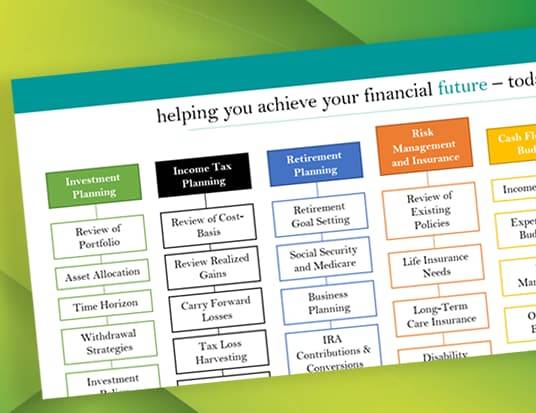
I hope you get value out of this blog post.

In an industry like financial advising, trust is one of the most important features of your service. When you combine the uncertainty of the market with the fact that clients are putting their financial future on the line, it’s easy to see why a client needs to trust you.
You might know perfectly well that you would never do anything to expose them to more risk than they can tolerate; and you might assume that the fact that they’re working with you means they know that, too. However, if you aren’t actively finding ways to demonstrate why your client should have full confidence in you, that trust is going to erode over time.
In this guide, I’ll go over the role that trust plays in an advisor-client relationship and give you some tips to proactively strengthen that trust with each of your clients.
When we talk about trust in a financial advisor-client relationship, we’re really talking about three different kinds of trust:
Trust is not something you just establish once and then let it go. You have to lay that foundation at the beginning and then continuously build on top of it as you go. To do that, you need to make a conscious effort to build that trust into your service. Here are five ways you can do that:
As discussed earlier, a key component of the trust you’re building is trust in your expertise. Clients come to you because you’re the expert but part of reassuring them that this is true is providing helpful financial education so that they can better understand why you’re making the recommendations that you’re making.
You don’t need to give them a full lecture on how financial markets work. You just need to provide enough information for your client to understand what it is you’re doing for them and why your recommendations make sense.
Avoid jargon and stick to plain language. When you can’t avoid certain industry terminology, make sure to relate it back to their specific situation. For example, if you’re recommending a Roth conversion, you’ll explain the key differences between a traditional and Roth IRA by showing them the difference it would make in their specific situation.
Making an effort to listen and take a client’s concerns seriously is a part of establishing trust in your intentions. After all, how can you have your client’s interests at heart if you’re not listening to what those interests are?
Before you jump into what you can do and what you recommend, just take the time to listen, ask questions, and get at the root of what their financial goals and worries are. Later, when you are making recommendations, make sure you directly relate to a goal or concern they brought up.
If you say, “I’ll go over your IPS later,” write a note in your calendar to make sure you don’t forget to do it. Then, after you’ve finished, send a follow up email with your notes and recommendations.
Advisors have a lot on their plate so it’s easy for little things to fall through the cracks. However, as far as your client is concerned, their account is the top priority and if you’re letting little things like promised phone calls or quick check-ins fall through, they’ll start to wonder how much attention you’re really giving to their account.
To help make follow through easier, even when you have a thousand tasks on your plate, use a software like Pulse360 that lets you automatically create tasks, set reminders, and generate emails based on your own custom templates. This way, you can make sure that every promise to return a call or follow up is kept.

When a financial advisor makes a mistake, it can shake that foundation of trust in your expertise. However, it won’t break it as long as you handle the mistake in a way that reminds your client that you take their financial security seriously and you are capable of learning from your mistakes.
If you or a staff member mess up, make sure you take responsibility instead of making excuses. Be prompt and thorough about addressing the issue and reversing or minimizing any damage. When the immediate problem has been solved, make sure to follow up with that client and describe the steps you’ll be taking to ensure that same mistake never happens again.
One of the best ways to maintain trust in your client/advisor relationships is to personalize your service. While it might seem small to send a birthday card or congratulate them when their favorite football team wins, this attention to detail goes a long way.
It shows that you respect this client as a human being, not just an account on your books. It’s also just easier to trust an advisor who puts that effort in. If you’re taking the time to remember the name of their pet cocker spaniel, you’re likely giving that same level of attention to their account.
So, make some time for small talk either at the beginning or end of your meetings and take note of any personal details mentioned. Use those details to pick out personalized gifts during the holidays or to create reminders to reach out to them on important occasions like birthdays and anniversaries.
The key to building trust is to be proactive about it. Don’t wait for an opportunity to demonstrate your trustworthiness. Create those opportunities. After reading through these tips, take a moment to think of what you can do right now for each of your clients to strengthen that foundation of trust.
